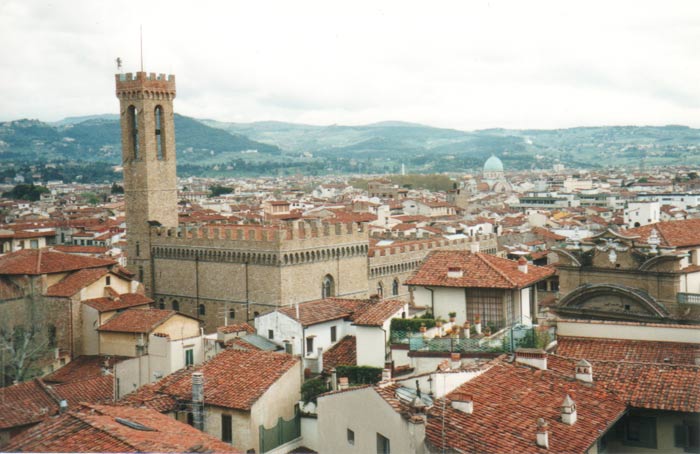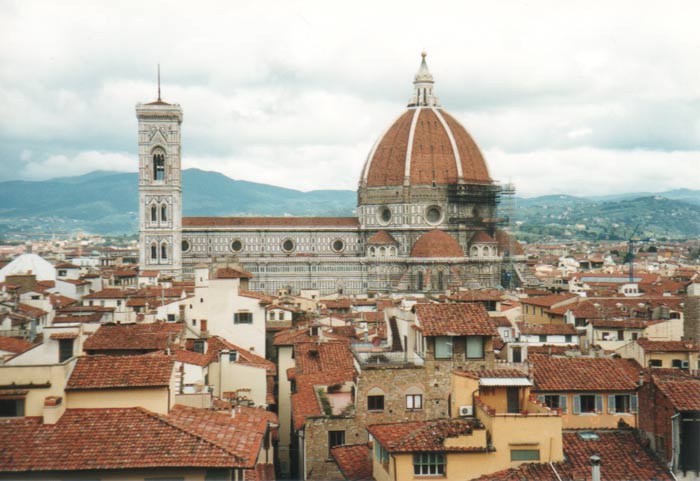
Wednesday, April 7th: From Monaco to Florence
"We woke up the next morning to stormy weather, and I was feeling sick. The ocean was beautiful in the gray of the coming storm, but there was little time to admire it - we were on the move again.
The day was marked by travel and cold rain. The drive to Florence spanned nearly 7 hours, and we arrived at the hotel in time for dinner:
Sheraton Firenze HotelWe were all cold, damp, and sniffily; so, we ate dinner at the hotel's buffet. Mike and I spent the rest of the evening watching the CNN reports on our war with Yugoslavia."
33 Via Giovanni Agnelli
Firenze Italy 50126
Phone: 39-055-64901
Thursday, April 8th: Florence
That was the end of my journal, so Mike and I have done some work to piece together information on the pictures from that day.
We took a bus from the hotel to downtown Florence, and started our day there by finding a bank where we could get some money exchanged. Following our stop at the bank, we walked across a bridge to the area where the Duomo and other sites of interest were.
My mom, Mike, and me on the bridge

First, we found the Piazza della Signoria. You can see the tower of the Palazzo Vecchio as you approach the Piazza, with a copy of the statue of David in front of it.

Information from "Eyewitness Travel Guides: Italy", page 282: "Piazza Della Signoria and Palazzo Vecchio have been at the heart of Florence's political and social life for centuries. The great bell once used to summon citizens to parlamento (a public meeting) here, and the square has long been a popular promenade for both visitors and Florentines. The piazza's statues (some are copies) commemorate the city's major historical events, but its most famous episode is celebrated by a simple pavement plaque near the loggia: the execution of a religious leader, Girolamo Savonarola, who was burned at the stake.
David: This copy of the famous Michelangelo statue symbolizes triumph over tyranny. The original (now in the Galleria dell'Accademia) stood in the piazza until 1873.
There were a number of statues in the courtyard, such as those below:
Information from "Eyewitness Travel Guides: Italy", page 283: "The Loggia dei Lanzi (1382): Designed by Orcagna, it is named after
Lancers, the bodyguards of Cosimo I who were billeted here. Perseus by Cellini (far left): This bronze statue (1554) of
Perseus beheading Medusa was intended to warn Cosimo I's enemies of their possible fate. Roman statues (rear): possibly
of emperors. The Rape of the Sabine Women (far right): (1583) The writhing figures in Giambologna's famous
statue were carved from a single block of flawed marble."
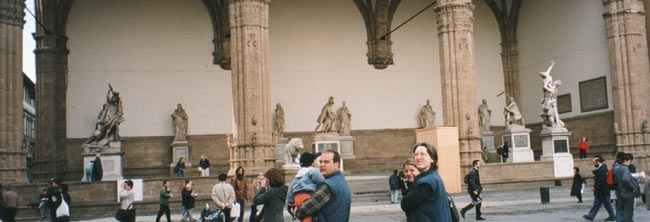
Information from "Eyewitness Travel Guides: Italy", page 282: "Fontana di Nettuno: Ammannati's fountain (1575)
of the Roman sea god surrounded by water nymphs commemorates Tuscan naval victories."

Our first touristy stop of the day was in the Palazzo Vecchio.
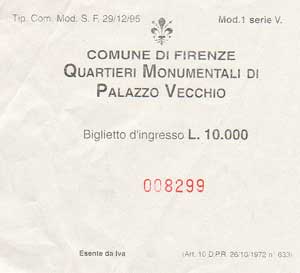
Information from "Eyewitness Travel Guides: Italy", page 283: "The "Old Palace" still fulfills its original role as Florence's town hall. It was completed in 1322 and a huge bell, used to call citizens to meetings or warn of fire, flood, or enemy attack, was hauled to the top of the imposing bell tower. While retaining much of its medieval appearance, the interior was remodeled for Duke Cosimo I when he moved into the palace in 1540."
The entrance was impressive, with a copy of Verrochio's Putto fountain and an elaborately painted ceiling.

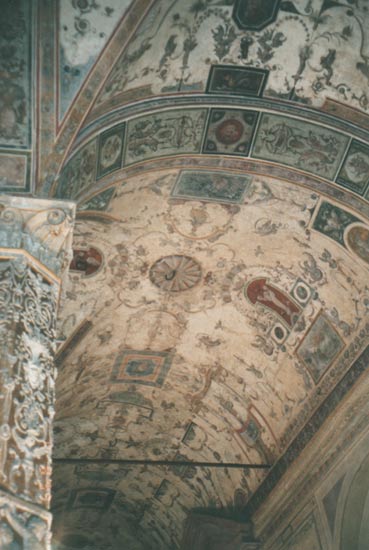
From there, we went into a hall of paintings.
Information from "Eyewitness Travel Guides: Italy", page 282: "Salone dei Cinquecento (1495): This vast chamber contains a statue of Victory by Michelangelo and frescoes by Vasari describing Florentine triumphs over Pisa and Siena."
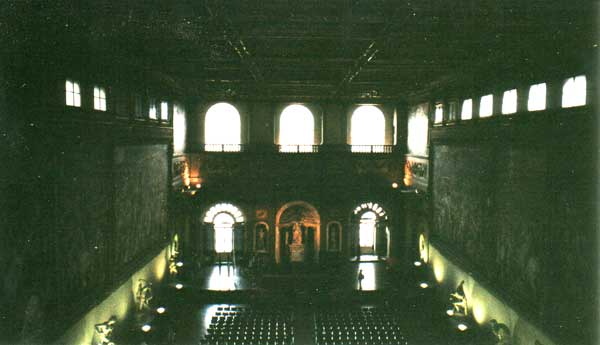

Dad and I climbed up to the tower, from which we got a great view of the city. The tall domed building in the Duomo - the subject of the next page on Florence.

